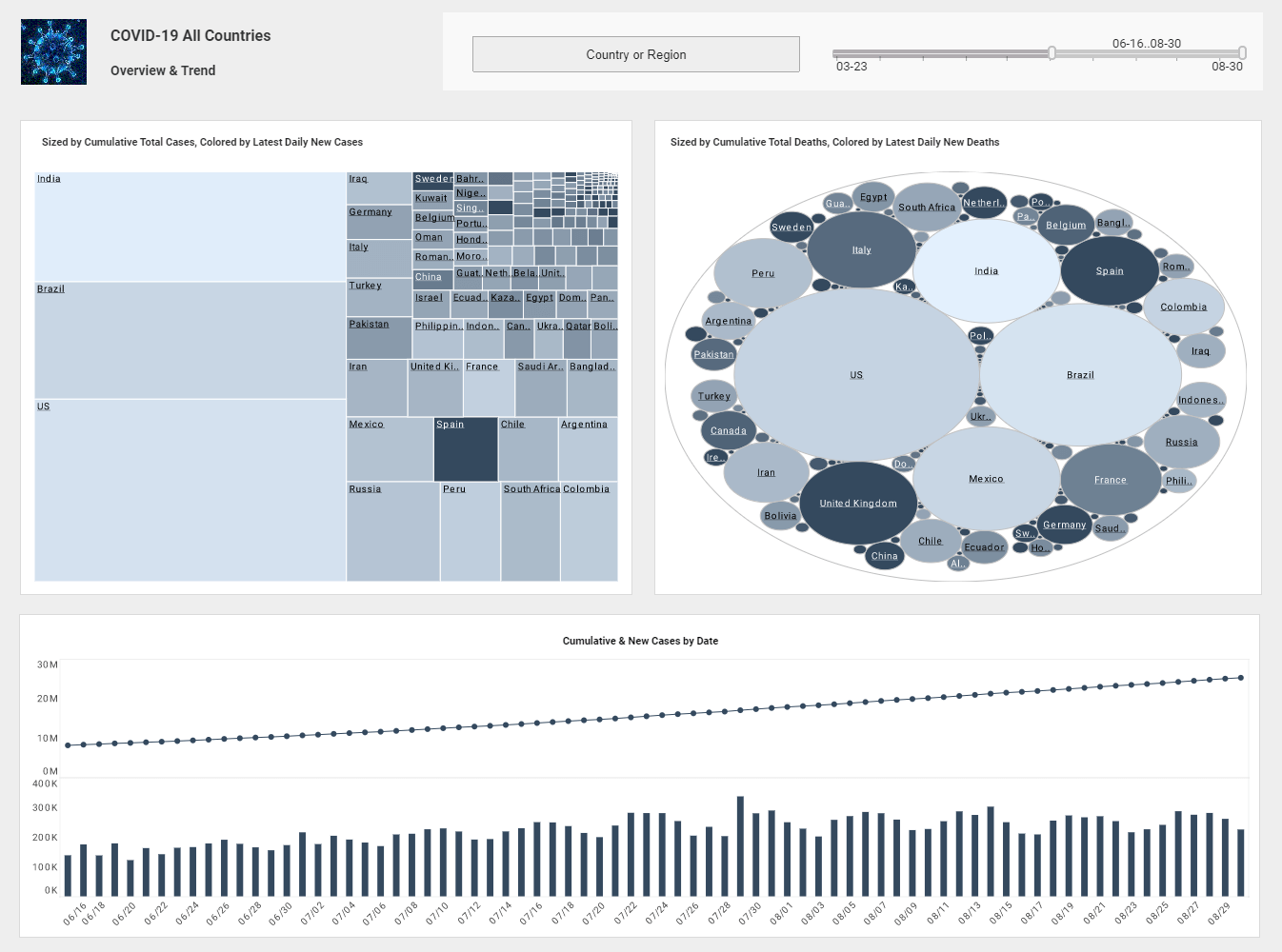What Are Some Examples of Unstructured Data BI Applications?
This is the continuation of the transcript of a Webinar hosted by InetSoft on the topic of "The Movement Towards Using Unstructured Data in Business Intelligence Solutions." The speaker is Mark Flaherty, CMO at InetSoft.
What are some examples of unstructured data BI applications there besides just trying to search and find a document or a report? Are people saying I want to count up the number of emails that reference a private plan, or this kind of thing?
I would say one of the primary applications is search, making it easier to find information, but the other is doing text analytics. These don’t have to be sophisticated, like the example you gave of counts of email occurrences, and the counts often become much more meaningful when you search for word pairs, not just counts of a single word. Let’s arbitrarily say you were looking at the Facebook and Google fracas. You want to see the amount of occurrences of people talking about the whole debacle between Facebook and Google over the past few weeks right.
It depends on the nature of the organization, so if you look at for instance at a marketing organization, one of the things a marketing organization does is it’s constantly monitoring the number of mentions you get in the press, the number of articles in which they appear, things like that. And so it’s a good tracker or indicator. It’s only one indicator, but it’s an indicator you could easily do.
It’s good for competitive intelligence applications if you’re trying to monitor your competition. One thing obviously is to have a dashboard that shows win loss statistics, but if you also had in that same window the information about your competitors either when they’re mentioned with you or mentioned independently, it can support a competitive or win loss dashboard.
Unstructured Data Dashboards In Customer Service
Customer service I can probably think of probably can use dashboards based on unstructured data. You could also monitor product quality by watching for customer complaints. I wouldn’t say so much this is application specific, but a functionality people are looking for. Searching and navigating to information. But the other is capturing information changes. So if a report changes, or a Web page changes, now that could be information that’s important to know. And once you are alerted to the change, you could drill down to the supporting information. So let’s say there’s a PowerPoint presentation that supports the report, or there’s a PowerPoint presentation or an Excel worksheet that supports a certain decision that was taken.
Excel is probably not a good example because that’s highly structured information that’s accessible elsewhere. But a Word document or a Power\Point document that supports the assumptions behind the plan or budget, being able to pull that information up or find that discussion or document and make that part of your collection of information. Collaborating has an application here, not just capturing the information but associating it then with particular topic. The example I like to use is that there’s some sort of planning decision. Let’s make it a pricing decision. You’re doing some structured analysis. You’re analysing revenue information and sales information and maybe competitive pricing information, which is all fairly structured. And you have a recommendation on what to do with pricing.
Then collaborating about that, sharing the recommendation, is what you want to do next. The recommendation may be to share prices up or down a certain percentage, and even the recommendation is a fairly structured piece of information. But the discussion and the dialogues about whether people agree with that and other factors to consider then becomes information that you capture and retain as part of the decision making progress.
Additional Examples of Unstructured Data BI Applications
Searching through that collaboration record is useful for two reasons. One is governance, being able to look back and see what was the decision making process. What factors did we consider in making these decisions? But it’s also useful when you’re making similar types of decisions. So maybe you had a discussion around pricing for the left handed widgets, and now you’re considering a pricing change for the right handed widget. Well, let’s see what the factors were that influenced the discussion on the left handed widgets, and then maybe some of that applies to what we’re doing now. Typically what happens is there’s a tool that people conduct the discussion in. Let’s say for instance it’s salesforce chatter.
Another example of unstructured data BI applications is sentiment analysis. Organizations can analyze customer feedback from sources like social media, online reviews, and support tickets to gauge public perception of their products or services. By extracting and categorizing sentiments expressed in these unstructured texts, businesses can identify trends, address issues proactively, and improve customer satisfaction.
Document classification is also a valuable use case. Companies often have large repositories of contracts, emails, and reports. Using machine learning techniques, these documents can be automatically categorized based on their content, making it easier to organize, retrieve, and comply with regulatory requirements. This reduces manual effort and enhances operational efficiency.
Finally, unstructured data BI applications can support fraud detection. By analyzing patterns in communication logs, transaction notes, or support interactions, organizations can uncover anomalies or suspicious behavior that may indicate fraudulent activity. Integrating these insights into BI dashboards enables faster response times and strengthens risk management strategies.


